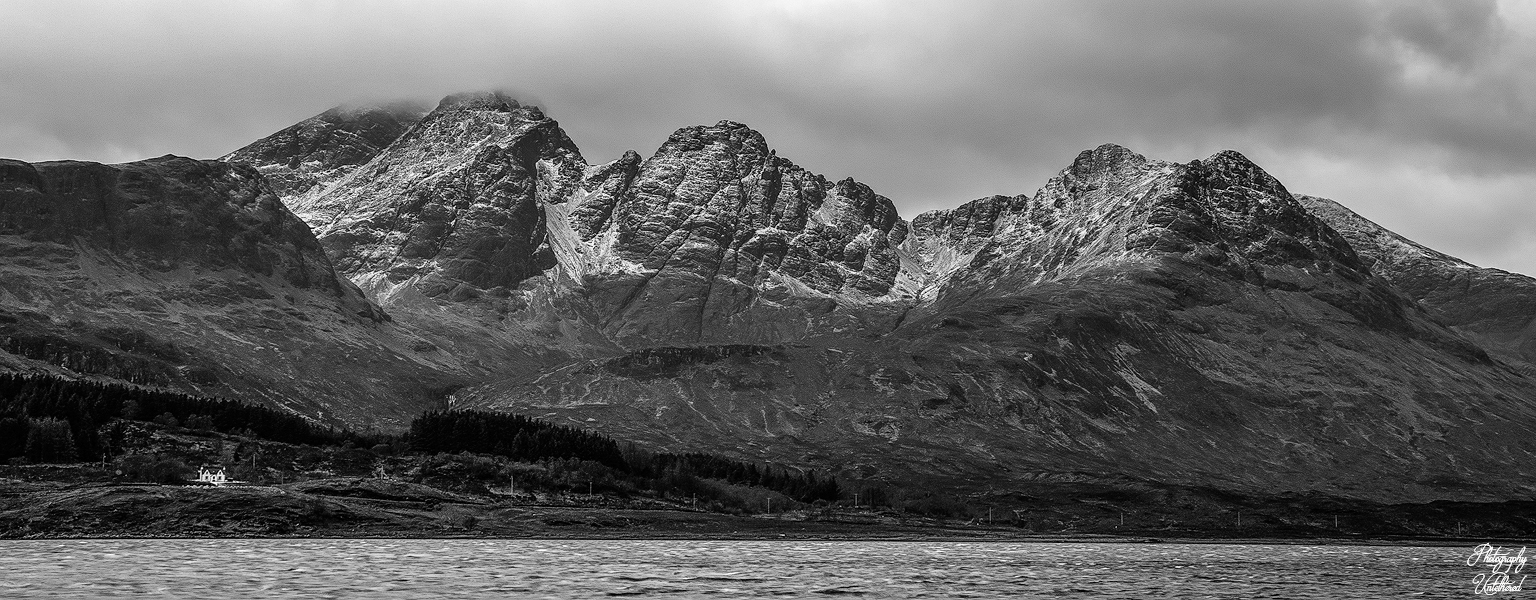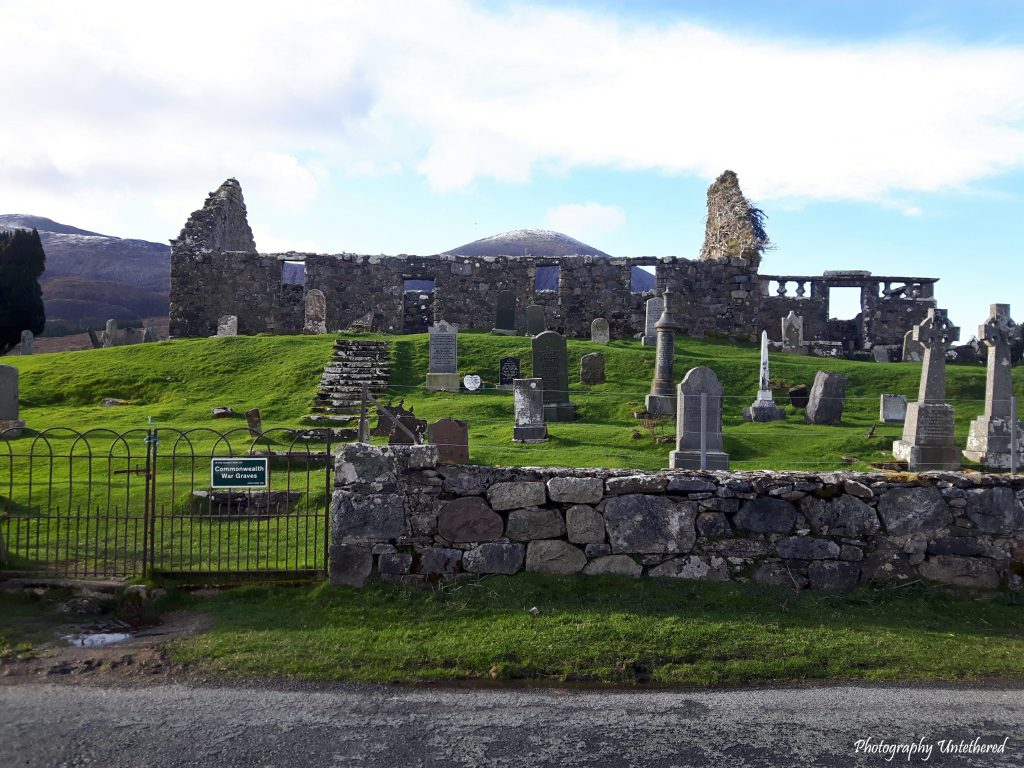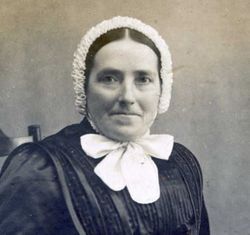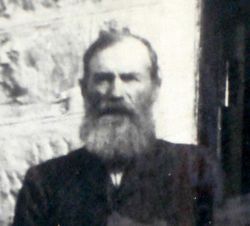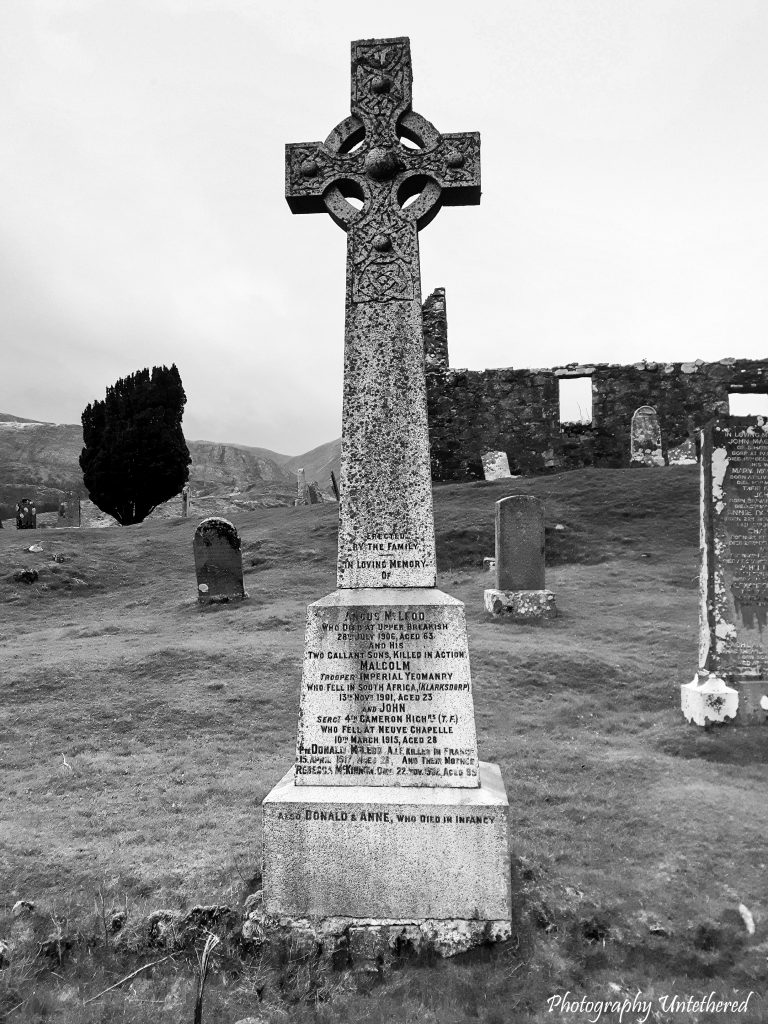Blà Bheinn from Loch Slapin in the Isle of Skye
Wild Nights in Skye:
The night had been wild with hail and rain. Formidable gales buffeted our van as we slept adjacent to a stormy wave-stricken Loch Slapin.
Despite the relentless lashing of the rain and pounding of the wind: it seemed not even an earthquake would disturb my daughter’s sweet slumbers. Yet, for myself, the night was spent in anxious apprehension of the van blowing over. 🤔
So in the hoolie, the next morning: keeping the camera still to compose this shot, proved a challenge, as you can see by the crests of the waves on the loch.
But I do like this. The Dark Jagged Ridge of Blà Bheinn with a dusting of snow, and the contrast of the white cottage against the dark woods. It’s a cracking mountain.
Blà Bheinn:
I don’t usually do black and white landscapes. Nevertheless, I thought this shot of Blà Bheinn from Loch Slapin in Skye, suited the mood of the morning. The mountains old pronunciation and spelling was Blaavin, however, the Norse word Bláfjall (Blue Mountain) is thought to be the original name. Bheinn is thought to be a Gaelicisation of fjall.
The cavernous depression of Srath na Creitheach detaches Blà Bheinn from the main Cullin Ridge on the Scottish Island of Skye. Blà Bheinn is considered by many including celebrated Cuillin pioneer Alexander Nicolson: as the finest mountain in Skye.
Although not part of the main Cuillin Ridge, Blà Bheinn still forms part of the Greater Cullin Traverse: recognised as the hardest ridge traverse in the British Isles. A journey over Blaven’s (aka Blà Bheinn) main ridge and rock tower Clach Glas is a classic alpine route. The magnificence of Blà Bheinn is completely appreciated by anyone travelling alongside Loch Slaplin from Torrin, to the Strathaird peninsula on the B8083 to Elgol.
Cill Chriosd:
The B8083 offers another interesting sight amongst the ruins of Cill Chriosd, or Kilchrist (Christ’s Church). Set in a natural amphitheatre of majestic hills the ruins are thought to date back to 600AD. I never fail to stop here when on my travels due to its all-pervasive ghostly feel. There are many old memorials and graves stones. One Celtic Cross stands out: that of the McLeod family who’s service to the Country is more than deserving a brief mention here.
Angus McLeod was born in 1845 and his wife Rebecca née Mckinnon McLeod in 1847. They had three children killed serving in the British & Dominion Forces. Malcolm born in 1878 was killed aged 23 in South Africa during the second Boer War. John born 1886 served with the Cameron Highlanders and was killed at Neuve-Chapelle in 1915. Donald born 1889 (who I assume must have emigrated to Australia before the Great War) joined the AIF and was killed at Villers-Bretonneux in April 1917. The eldest son James born 1874 died in 1947 and is buried at Cill Chriosd. Malcolm, John and Donald lay in some corner of a foreign field that is forever Skye. James wife Christina “Christy” Lamont McLeod was the final burial in the family plot in 1970.
The harshness of Life:
Their father Angus Mcleod died in 1906, however, his wife Rebecca lived until 1932 enduring the eternal grief of losing three children in war. Moreover, the base of the cross reads “DONALD and ANNE, who died in infancy”. A stark reminder to modern generations of the sacrifice and endurance necessary, to deal with the day to day harshness of life: that our ancestors faced in these isles not so many generations ago.
McLeod Family Cross, Cill Chriosd, or Kilchrist (Christ’s Church) Skye.
The website is self-funded, and my work is free. All profits from the sites product links go to SightSavers; if you have enjoyed any aspect of this site please consider a giving a donation here. No one should go blind from avoidable causes. How many people’s sight will you help us save today?
Fragmented Memory 🙂
